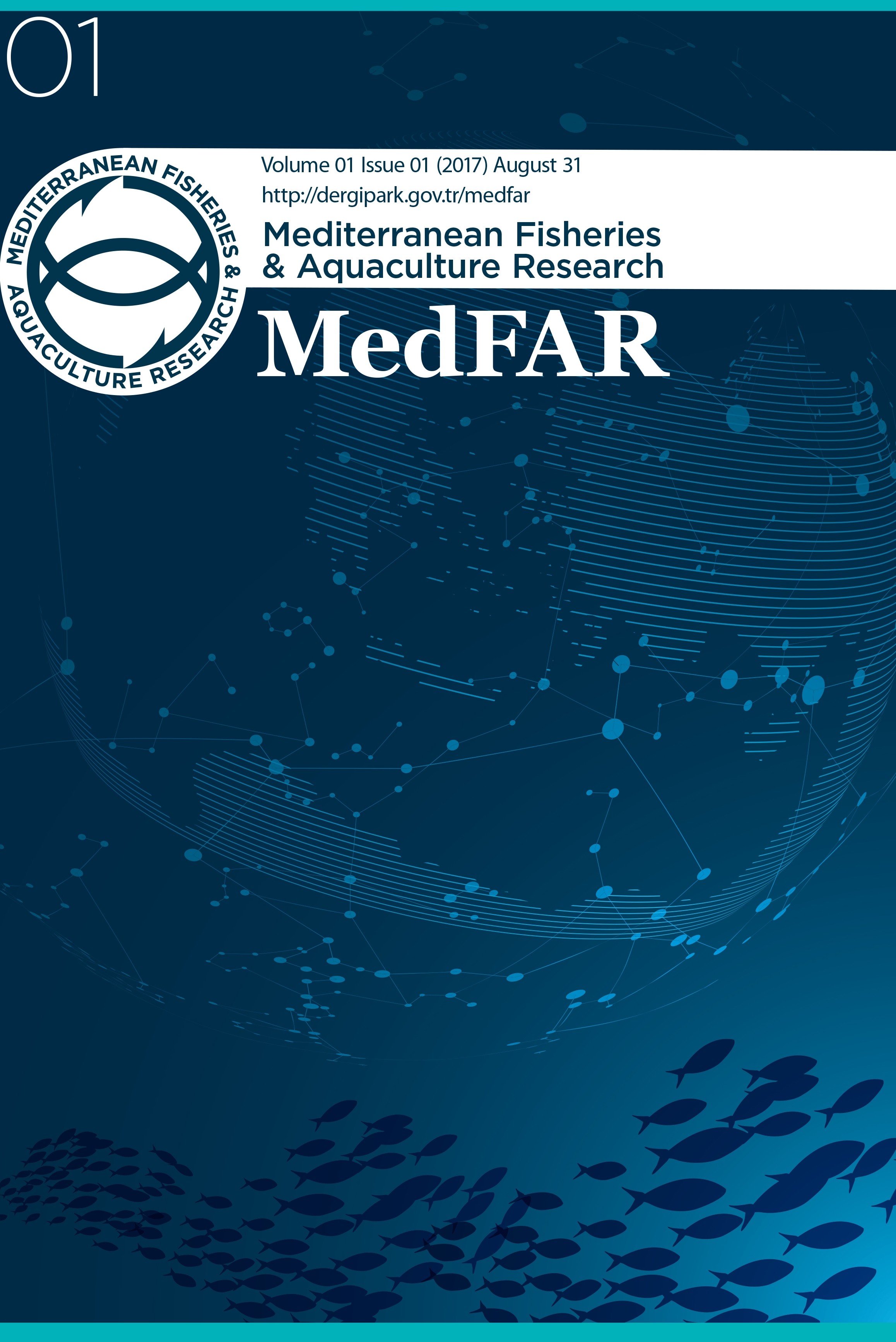Arsenik Metabolizması ve Arsenolipid Biyosentezi
Arsenik Metabolizması ve Arsenolipid Biyosentezi
Metal ile ametal arasında bir özelliğe sahip olan arsenik yerkabuğunda en çok bulunan elementlerden biri olup organik ve inorganik formlara sahiptir. Arsenik toksisitesi, kimyasal forma, ortam derişimine ve türe bağlı olarak değişirken arsenit (As+3) ve arsenat (As+5) gibi inorganik formları hayvansal organizmalar için toksik ve kanserojen etkiye sahiptir. Doğal süreçler ve antropojenik etkiler sonucu doğada yüksek derişimlerde bulunan arsenik, biyolojik sistemlerde metilasyon süreci ile ya da organik bileşiklerle kompleks oluşturarak organoarsenikaller haline dönüştürülebilen doğal bir detoksifikasyon mekanizmasına sahiptir. Arseniğin organik formları ile makromoleküllerinin inorganik arsenik türlerine göre daha az toksik olduğu bilinmektedir. Bir organoarsenikal türü olan arsenolipitlerin biyosentezi, arsenit metabolitlerinin doğal oluşumuna dayanır ve bu yoldaki tüm ara maddeler algal kökenlidir. Bu derlemede; arsenikin kaynakları, kimyasal formları, biyolojik sistemlerde arsenik metabolizması ve arsenolipid biyosentezi ile toksik etkileri incelenmiştir.
Keywords:
Arsenik, sucul ekosistemler toksisite,
___
- Yücecan, S., Baykan, S. (1981) Food Chemistry, Food control and Analyses (in Turkish), M.E.B. Temel Ders Kitabı, 5: 51-53, İstanbul.
- Wassell, P., Bonwick, G., Smith, C.J., Almiron Roig, E., Young, N.V.G. (2010) Towards a multidisciplinary approach to structuring in reduced saturated fat-based systems – a review. Introduction of Journal of Food Science and Technology, 45: 642–655.
- Gordon, D. T., Ratliff, V. (1992) The implications of omega-3 fatty acits in human healty, Advances in Seafood Biochemistry Composition and Quality, Ed. By George L. Flick, 406 pp.
- Akyurt, İ. (1993) Fish feeding Technology (in Turkish), Atatürk Üniversitesi Ziraat Fak. ders kitabı, 156: 75, Erzurum.
- Özbolat, G., Tuli, A. (2016) Ağır Metal Toksisitesinin İnsan Sağlığına Etkileri. Arşiv Kaynak Tarama Dergisi, 25(4): 502-521.
- Flora, S.J.S. (2015) Arsenic: Chemistry, Occurrence, and Exposure, in Handbook of Arsenic Toxicology, Academic Press: Oxford, 1-49.
- Kumari, B., Kumar, V., Sinha, A.K., Ahsan, J., Ghosh, A.K., Wang, H., DeBoeck, G. (2017) Toxicology of arsenic in fish and aquatic systems. Environmental Chemistry Letters, 15(1): 43-64.
- Kunito, T., Kubota, R., Fujihara, J., Agusa,T., Tanabe, S. (2008) Arsenic in Marine Mammals, Seabirds, and Sea Turtles, D.M. Whitacre (ed.), Reviews of Environmental Contamination and Toxicology., Springer, IX, 185.
- Yağmur, F., Hancı, İ.H. (2002). Arsenik, Sürekli Tıp Eğitimi Dergisi, 11: 250-251
- Başkan, M.B., Pala, A. (2009). İçme Sularında Arsenik Kirliliği: Ülkemiz Açısından Bir Değerlendirme, Mühendislik Bilimleri Dergisi, 15(1): 69-79.
- Minokoshi, Y., Saito, M., Shimazu, T. (1988) Sympathetic activation of lipid synthesis in brown adipose tissue in the rat. J Physiol (Lond) 398: 361-370.
- Schlenk, D., Wolford, L., Chelius, M., Stevens, J., Chan, K.M. (1997) Effect of arsenite, arsenate, and the herbicide monosodium methyl arsonate (MSMA) on hepatic metallothionein expression and lipid peroxidation in channel catfish. Comparative Biochemistry and Physiology C, 118: 177-183.
- Sele, V., Sloth, J.J., Lundebye, A.K., Larsen, E.H., Berntssen, M.H., Amlund, H. (2012) Arsenolipids in marine oils and fats: A review of occurrence, chemistry and future research needs. Food Chemistry, 133: 618-630.
- Francesconi, K.A. (2010). Arsenic species in seafood: Origin and human health implications. Pure and Applied Chemistry, 82: 373-381.
- Foster, S., Maher, W., Taylor, A., Krikowa, F., Telford K. (2005). Distribution and speciation of arsenic in temperate marine saltmarsh ecosystems. Environmental Chemistry, 2: 177-189.
- Francesconi, K.A., Edmonds, J.S. (1997). Arsenic and marine organisms. Advances in Inorganic Chemistry, 44: 147-189.
- Edmonds, J.S., Shibata, Y., Francesconi, K.A., Yoshinaga, J., Morita, M. (1992) Arsenic lipids in the digestive gland of the western rock lobster Panulirus cygnus: an investigation by HPLC-ICP-MS, Science of the Total Environment, 122: 321-335.
- Dembitsky, V.M., Rezanka, T. (2003) Natural occurrence of arseno compounds in plants, lichens, fungi, algal species, and microorganisms. Plant Science, 165: 1177-1192 .
- Lischka, S., Arroyo Abad, U., Mattusch, J., Kuehn, A., Piechotta, Ch. (2013) Ringa balığı filetosu (Clupea harengus) arsenolipidlerinin çeşitliliği. Talanta, 110: 144-152.
- Taleshi, M.S., Seidler-Egdal, R.K., Jensen, K.B., Schwerdtle, T., Francesconi, K.A. (2014) Synthesis and Characterization of Arsenolipids: Naturally Occurring Arsenic Compounds in Fish and Algae. Organometallics, 33(6): 1397-1403.
- Benson, A. A. (1989) Arsenolipids. In R. G. Ackman (Ed.), Marine Biogenic Lipids, Fats and Oils (pp. 1). Florida, USA: CRC Press.
- Lunde, G. (1972) The analysis of arsenic in the lipid phase from marine and limnetic algae. Acta Chemica Scandinavica, 26: 2642-2644.
- Morita, M., & Shibata, Y. (1988) Isolation and identification of arseno-lipid from a brown alga, Undaria Pinnatifida (Wakame). Chemosphere, 17(6): 1147-1152.
- Wrench, J. J., Fowler, S. W., Ünlü, M. Y. (1979) Arsenic Metabolism in a Marine Food Chain. Marine Pollution Bulletin, 10: 18-20.
- Francesconi, K. A. (2010). Arsenic species in seafood: Origin and human health implications. Pure and Applied Chemistry, 82: 373-381.
- Sanders, J. G. (1979) Concentration and speciation of arsenic in marine macroalgae. Estuarine and Coastal Marine Science, 9(1): 95-99.Benson, A. A., Summons, R.E. (1981) Arsenic accumulation in great barrier-reef invertebrates. Science, 211: 482-483.
- Cooney, R. V., Mumma, R. O., Benson, A.A. (1978) Arsoniumphospholipid in algae. Proceedings of the National Academy of Sciences USA, 75(9): 4262-4264.
- Hao, M.M., Mukherjee, S., Maxfield, F.R. (2001) Cholesterol depletion induces large scale domain segregation in living cell membranes. Proceedings of the National Academy of Sciences of the United States of America, 98(23): 13072-13077.
- Jensen, M. O., Mouritsen, O. G. (2004) Lipids do influence protein function-the hydrophobic matching hypothesis revisited. Biochimica Et Biophysica Acta-Biomembranes, 1666 (1-2): 205-226.
- Meyer, S., Matissek, M., Müller, S.M., Taleshi, M.S., Ebert, F., Francesconi, K.A., Schwerdtle, T. (2014). In vitro toxicological characterisation of three arsenic-containing hydrocarbons. Metallomics, 6: 1023 - 1033 DOI: 10.1039 / c4mt00061g
- Schmeisser, E., Goessler, W., Francesconi, K.A. (2006) Human metabolism of arsenolipids present in cod liver. Analytical and Bioanalytical Chemistry, 385: 367-376.
- Başlangıç: 2018
- Yayıncı: Mersin Üniversitesi
Sayıdaki Diğer Makaleler
Nuray ÇİFTÇİ, Deniz AYAS, Mısra BAKAN
Occurrence of Brama brama (Bonnaterre 1788) in the Eastern Mediterranean, Turkey
Deniz ERGÜDEN, Deniz AYAS, Sibel ALAGÖZ ERGÜDEN, Ferhat KABAKLI
Arsenik Metabolizması ve Arsenolipid Biyosentezi
Ağır Metal Şelasyonunda Fitoremediasyon Tekniği ve Uygulamada Etkili Makrofitler
